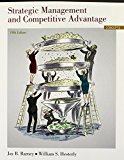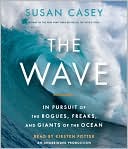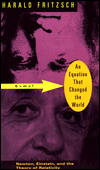Emotion and Reason: The Cognitive Neuroscience of Decision Making
Berthoz, Alain
Decision making is an area of profound importance to a wide range of specialties - for psychologists, economists, lawyers, clinicians, managers, and of course philosophers. Only relatively recently, though, have we begun to really understand how decision making processes are implemented in the brain, and how they might interact with our emotions. Emotion and Reason presents a groundbreaking new approach to understanding decision making processes and their neural bases. The book presents a sweeping survey of the science of decision making. It examines the brain mechanisms involved in making decisions, and controversially proposes that many of our perceptual actions are essentially decision making processes. Whether looking, listening, hearing, or moving, we choose to attend to certain stimuli, at the expense of others. In some psychiatric disorders the inability to respond selectively to certain stimuli can be harmful - such pathologies of decision making are additionally considered. Berthoz also considers how many decision making processes involve an internal dialogue with our other self, and how this dialogue with our 'doppelganger' might be represented in the brain. He considers the important implications that a neuroscience of decision making can have for the judiciary - how we apportion blame and responsibility, for economics - with discussion of the growing field of neuroeconomics; and for theories of management. Lastly he examines decision making and creativity - if perception relies in part on decision making processes, how might this alter our view of the artistic process? Written by a neuroscientist of international fame and accessible for both scientists and non-scientists,this book is the most exhaustive examination of the science of decision making yet.
Doody Review Services
Reviewer:Gary B Kaniuk, Psy.D.(Cermak Health Services)
Description:This book describes the cognitive neuroscience underlying decision making, examining brain functioning of basic actions and how emotion interacts with and influences choices. It is a philosophical treatise as well, discussing the self as related to perception and sensation, especially in terms of physical/psychological disorders.
Purpose:According to the author, I suggest moreover, that perception is not only simulated action but also and essentially a decision. Perceiving means not only combining and weighting, it means choosing from among the variety of available sense data those pertinent to the action envisaged. Perceiving resolves ambiguity; thus, perceiving is deciding. In contrast to the ideas maintained by some schools of cognitive psychology, I also suggest that decision making is not a process specific to humans, whose functioning depends on the prefrontal cortex and mechanisms such as working memory, which enables him to hold in his mind facts and recollections. I will argue that decision making mechanisms are present in animals at various levels of their central nervous system. We need to construct a 'hierarchical' and 'heterarchical' theory of decision making, to understand how parallel and serial processing of information is organized. Deciding is about linking the present to the past and to the future; it is about organizing things. In this book, I will try to show what I mean by these ideas.
Audience:This book is written for a technically minded audience, such as neuropsychologists and cognitive scientists, as well as graduate students in both fields. The author is the director of the Laboratory of Perception and Action at UMR/CNRS, College de France in Paris.
Features:The four parts of the book cover whether decision making is rational or irrational; decision making with one's second self; perception, preference, and decision making; and magical thinking. In general, the author discusses the neurobiological mechanisms of decision making, relating emotion to cognition. These chapters are fascinating because the author sheds new light on neuropsychological/physical pathologies such as agnosia, obsessions/compulsions, fight or flight reactions, Parkinson's Disease, and phantom limbs. Chapter six is very interesting reading, discussing bodily illusions such as phantom limbs and other disorders of body recognition. The book is full of research and includes some clinical examples. One shortcoming is that this is fairly technical reading. The reader must have a solid background in cognitive science to really understand it. But it is compelling material and one will not be disappointed because the author is so thorough. He unravels the underlying cognitive mechanisms of both the common and the mysterious. The book has many interesting and helpful figures and diagrams.
Assessment:I enjoyed this book, although it was somewhat of a challenge because my background is as a clinical psychologist with a generalist training, not as a neuropsychologist. Readers interested in the cognitive underpinnings of decision making and its relationship to emotion should have this book.
| Name in long format: | Emotion and Reason: The Cognitive Neuroscience of Decision Making |
|---|---|
| ISBN-10: | 0198566263 |
| ISBN-13: | 9780198566267 |
| Book pages: | 312 |
| Book language: | en |
| Edition: | 1 |
| Binding: | Hardcover |
| Publisher: | Oxford University Press |
| Dimensions: | Height: 6.8 Inches, Length: 9.7 Inches, Width: 0.9 Inches |
















